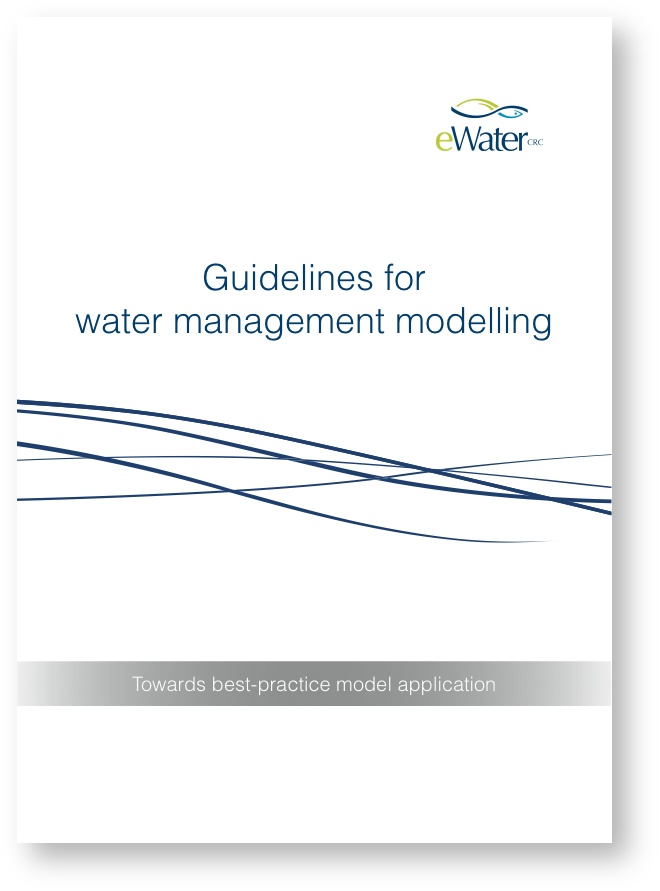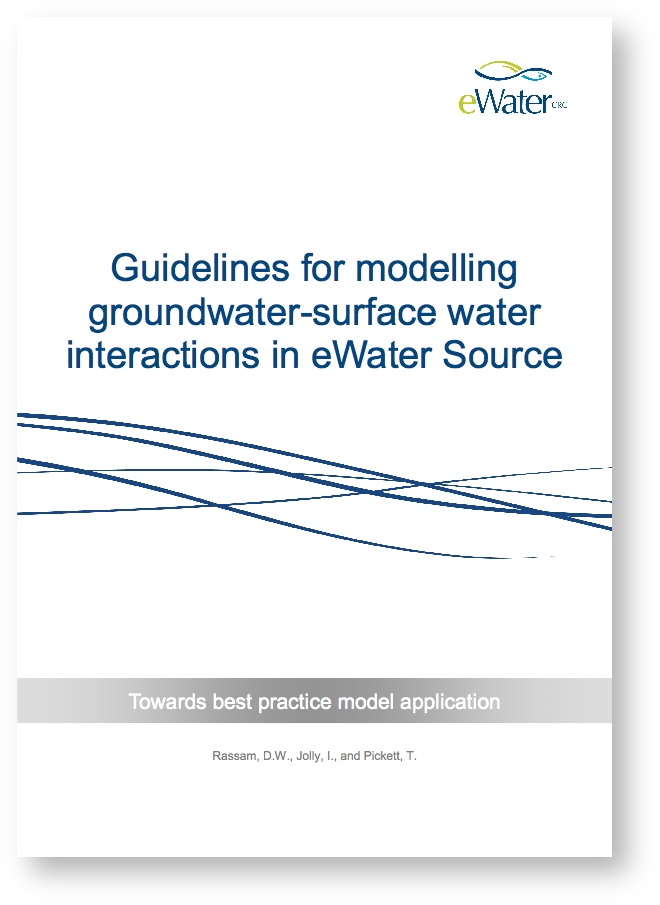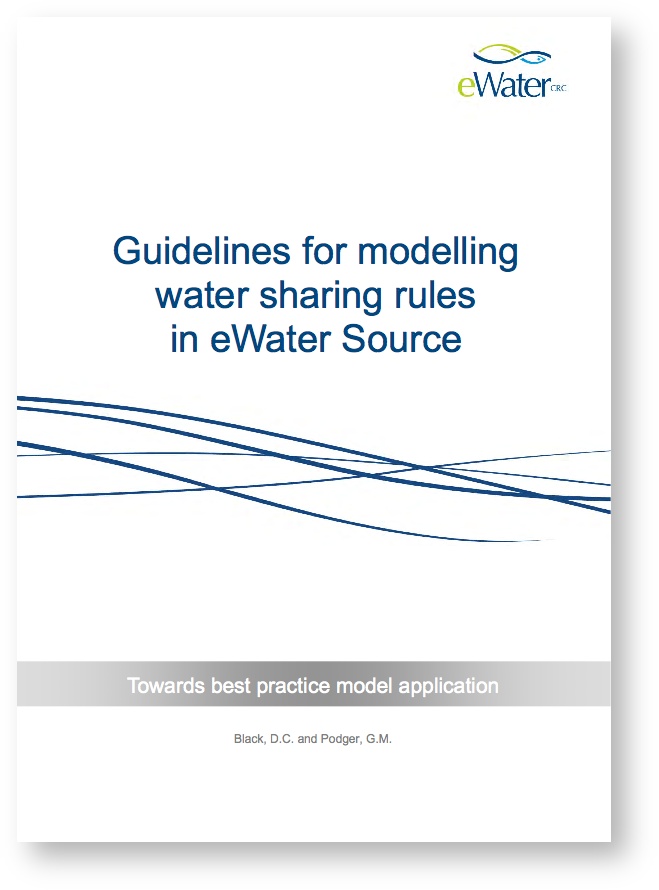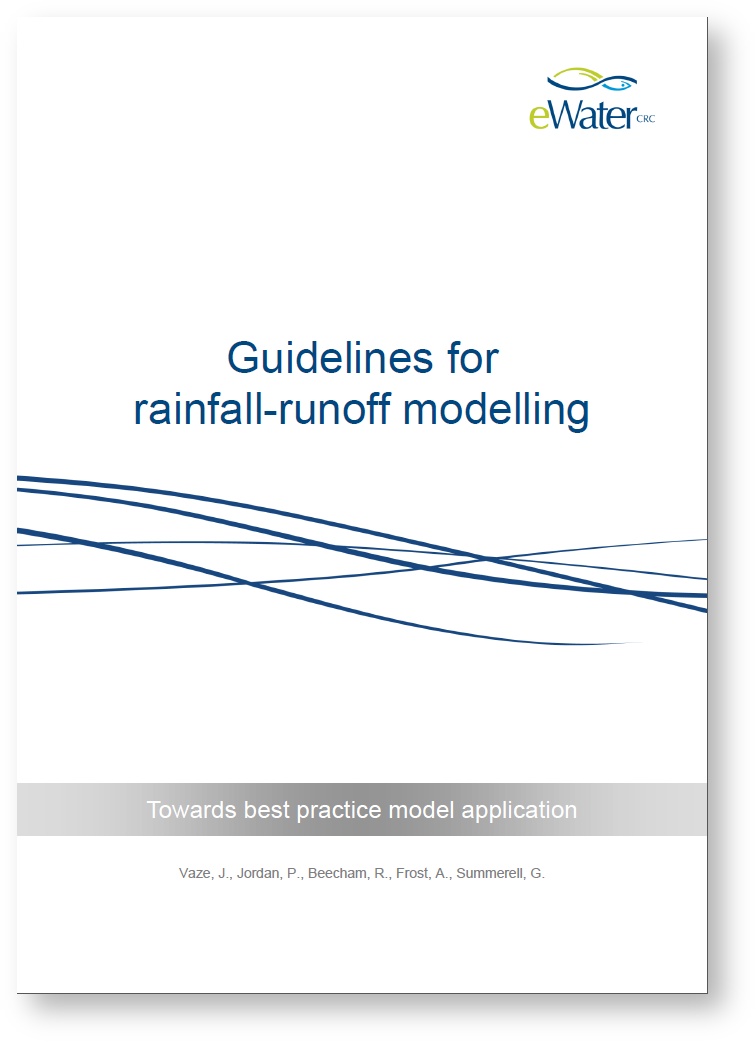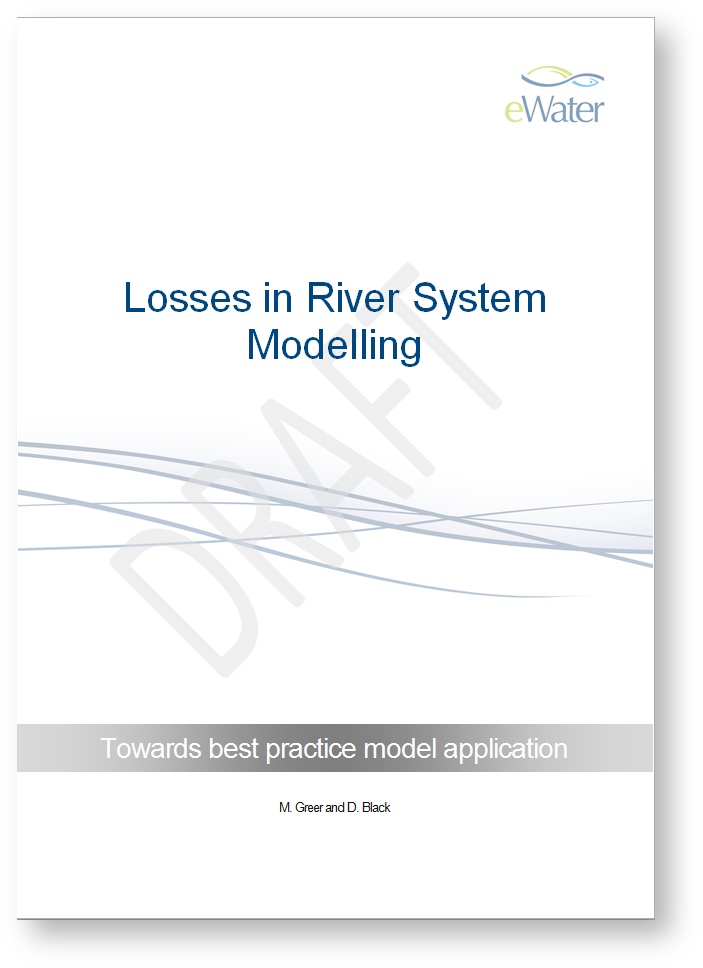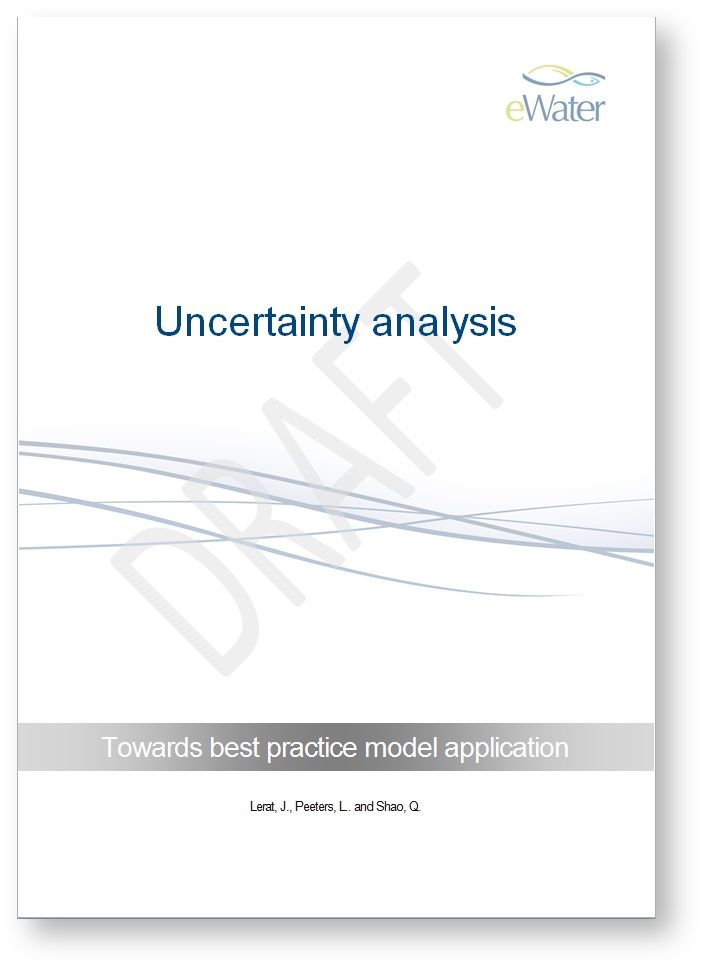Best Practice Modelling
Purpose
As a major provider of modelling products, eWater recognises its responsibility to foster a best practice approach to the use of its products.
In Australia and elsewhere there is a growing expectation that there should be a consistent approach to applying models used to support water management decisions, with the primary aims of:
- improving modelling practice;
- removing inconsistencies between model applications, including in adjoining catchments where the same model code is used in both, and in situations such as managed river systems that interact with one another;
- providing quality assurance, including evaluating uncertainty in modelling results;
- improving decision making, including by using ‘decision’ science (providing new approaches to risk, uncertainty and optimisation) to improve the quality and robustness of decisions;
- improving communication with end-users of model results: water managers, decision makers and the wider community; and
- providing a process that is transparent, robust and repeatable.
eWater has adopted an approach of developing a hierarchy, or family, of guidelines. The level of detail increases from the highest to the lowest level in the guidelines.
The family of guidelines presently comprises an overarching, high-level guideline, and three domain specific guidelines. Two more best practice guidelines are being drafted now, one on handling model uncertainty and another on modelling losses within river systems.
The guidelines are now available via the eWater Toolkit. Click on Download software to access the guidelines.
How to contribute
If you want to comment on the family of guidelines or an individual one there is a comment field below. You can also use this field to suggest an aspect of modelling that best practice guidelines should be developed for.
| Title | Description | Date published |
|---|---|---|
| This document represents the highest level in the hierarchy of guidelines. It provides a generic procedure to underpin delivery of quality assured, best modelling practice outcomes, including a framework for using domain-specific supporting guidelines. This document is not meant to be prescriptive, nor to re-invent material and concepts that are better explained or already available elsewhere. Hence, these high level guidelines draw as appropriate on other material already available from the international literature and on the Internet. A generic procedure for quality assured model application comprised of four steps is examined:
These guidelines provide an integrated approach that enables interactions and feedbacks between all domains revevant to water management (eg hydrological, ecological, engineering, social, economic and environmental) to be considered. It provides for outputs of analyses in these domains to feed into multi-objective decision analysis, which links outputs with views and preferences of multiple stakeholders and enables decisiona to be made with the aim of satisfying the objectives of all sectors. In addition, the procedure in these guidelines is intended to be flexible enough to accommodate variations in the meaning of 'Best Practice Modelling' and also allow for continuous improvement as the state of knowledge and technology in the modelling field develops. | September 2011 |
| In many river systems, the extraction of large volumes of groundwater in close proximity to major streams and rivers has the potential to reduce stream flows. The modelling of GW-SW interactions in river system models is still very much in its infancy, not just in Australia, but also throughout the world. As such, there is no consensus on implementation of this functionality in river system models, and hence the little discussion in the literature so far on what constitutes Best Practice Modelling in this domain This document has been prepared by eWater as a first attempt at providing guidance on the application of GW-SW interactions in existing river and groundwater models, and in the new Source IMS modelling tools incorporating GW-SW functionality. It is based on a combination of a literature review (Rassam and Werner, 2008), lessons learnt from the recent Murray-Darling Basin Sustainable Yield (MDBSY) project (Rassam et al., 2008), and lessons learnt during the development of the GW-SW functionality in Source IMS (Rassam, 2011) and testing this functionality in trial reaches in the Namoi River basin. The target audience for this document is practising river system and catchment modellers with an appropriate background who are interested in incorporating GW-SW interactions in their river planning models These guidelines deal mainly with phases 2 and 3 of the general procedure for quality assured model application outlines above in higher level document - Guidelines for water management modelling. From the point of view of application of GW-SW interaction modelling in Source IMS the generic guidelines mostly provide sufficient information relevant to phases 1 and 4, particularly as GW-SW interaction modelling usually comprises part of a larger project and phases 1 and 4 would be covered in more detail in the planning and undertaking of this larger project. | November 2011 |
| Water sharing rules are frequently encapsulated in some form of water management plan, or policy, which often has statutory status. Modelling water sharing rules is often the main focus of water management modelling studies, and the process of arriving at an agreed set of rules that can impact water users, including the environment, is usually socially and politically sensitive. This sensitivity is a major factor underlying Australian water management agencies’ needs for best practice modelling guidelines. This guideline provide guidance relevant to modelling the practical implementation of water sharing rules via river and dam operating rules and rules governing access to water. They also provide guidance relevant to modelling the assessment of water availability (ieresource assessment) and water use accounting procedures. However, the closely related topic of modelling restriction trigger thresholds in storages (eg target curves) is covered in This guideline deal mainly with phases 2 and 3 of the general procedure for quality assured model application outlines above in higher level document - Guidelines for water management modelling. From the point of view of modelling water sharing rules, the generic guidelines provide sufficient information relevant to Phases 1 and 4, particularly as this activity is usually just one of several comprising a project as a whole, and Phases 1 and 4 would be considered in more detail in the planning and undertaking of the overall project. However, guidance on aspects of Phases 1 and 4 specifically relating to modelling water sharing rules is provided, where the need has been identified, at appropriate points in these guidelines. | July 2012 |
| Reliable estimates of stream flow generated from catchments are required as part of the information sets that help policy makers make informed decisions on water planning and management. The purpose of this document is to provide guidance on the best practice for implementing fit for purpose rainfall-runoff models, covering topics such as setting model objectives, identifying data sources, quality assuring data and understanding it's limitations, model selection, calibration approaches, and performance criteria for assessing fitness for purpose. This guideline deal mainly with phases 2 and 3 of the general procedure for quality assured model application outlines above in higher level document - Guidelines for water management modelling, as rainfall-runoff modelling is usually only part of a larger hydrological modelling project and phases 1 and 4 would most appropriately considered in that context. Specific aspects of project management and optional comparison that are directly applicable to the development of a rainfall-runoff model, such as accreditation, are dealt with at appropriate points in this guideline. | March 2012 |
This guideline addresses the modelling of water losses within a river system. Losses are an extremely important element of river systems that have a large impact on the model’s ability to predict flows across the full flow range. This is especially so in ephemeral systems and where the climate is highly variable as in both cases there is a high degree of flow variability and losses can be the dominant factor affecting low flow characteristics. To model the flow regime accurately it is necessary to identify individual loss components in a river system and model these as realistically as possible. This guideline focuses on loss modelling in river system models relevant to eWater Source, but does not discuss loss modelling related to other types of river modelling, e.g. flood or hydrodynamic modelling. Also, these guidelines do not address the closely related subject of modelling groundwater-surface water interactions as there is a separate guideline on this topic. Loss modelling usually occurs as part of a larger project rather than by itself, so this guideline only touches on the 'project management' and 'compare options and select the best' phases briefly, which are covered in the Guidelines for Water Management Modelling. This guideline focuses on the 'problem definition' and 'option modelling' phases of a modelling project. | Coming soon | |
Uncertainty assessment is one of the steps listed in the Guidelines for Water Management Modelling, and is also vital to performing risk assessments. This document provides guidance on:
The guideline presents three levels of uncertainty assessment with increasing degrees of complexity from non-statistical approaches to fully probabilistic ones. It focuses on:
| Coming soon |

